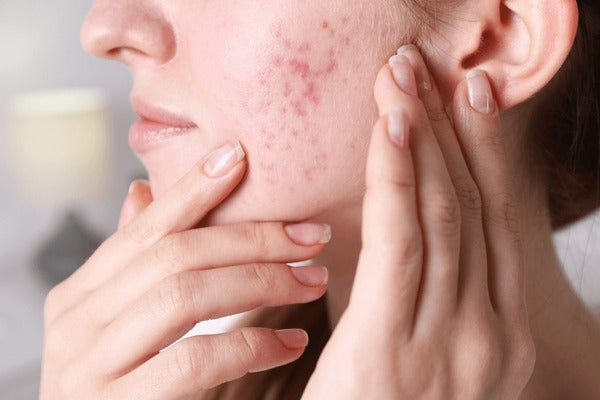Viral Infections and Folliculitis: Understanding Causes and Prevention
As a skilled beautician, understanding the intricacies of skin conditions like viral infections and folliculitis is crucial. These common issues not only affect the skin's appearance but also its health. By learning about these conditions, you can help your clients achieve clearer, healthier skin and offer the best care and advice possible.

What Are Viral Infections and Folliculitis?
To effectively combat folliculitis, it's important to understand its roots. Folliculitis refers to the inflammation of the hair follicles, and while it can result from bacterial or fungal infections, viral infections play a significant role too. This is especially crucial information for beauticians, as they are often the first in line for spotting these issues on clients' skin. Viral infections, on the other hand, involve the invasion of various viruses into the body, causing a myriad of symptoms, including skin disturbances such as folliculitis.
How Viral Infections Lead to Folliculitis
Beauticians should be aware that specific viral infections, such as herpes simplex, can lead to folliculitis, particularly if the immune system is compromised. In these cases, the virus attacks the skin cells and can cause inflamed follicles. You may find additional insights on viral contributions at the National Center for Biotechnology Information.
Recognizing the Symptoms
As a professional with your clients' best interests at heart, being able to recognize symptoms of viral infections and folliculitis ensures timely advice and treatment. These include redness, itching, and pus-filled bumps. For a detailed overview of these symptoms, you can refer to Medical News Today.
Importance of Early Detection
Early detection helps in treating the condition swiftly. Clients experiencing these symptoms should be advised to seek medical attention. Beauticians often have a unique vantage point to detect these early signs and provide referrals.
Professional Prevention Techniques
Consider incorporating preventive measures into your client skincare routines. Regular cleansing and moisturizing using suitable products can help prevent viral infections and folliculitis. Suggestions like these can be reinforced by educating clients on using antifungal soap.
Handling Infections in the Salon
It is essential to maintain a clean working environment to minimize the risk of infections. Disinfect tools regularly, use disposable materials when appropriate, and ensure that any materials that come into contact with clients' skin are clean and sterilized.
Healing and Treatment Options
Treatment depends on the exact cause of the folliculitis. Should viral infections be the underlying cause, antiviral medications may be prescribed. More information on effective skin condition treatments can be found in articles like signs of folliculitis and WebMD's detailed guide.
Role of Skincare in Treatment
As a beautician, recommending tailored skincare regimens helps improve the skin's resilience against infections. Encourage hydration and protective measures, particularly for skin prone to viral infections.
Educating Clients for Long-term Benefits
Equip clients with the knowledge needed to protect their skin. Discuss maintaining a healthy lifestyle, which significantly impacts skin health and its ability to ward off infections.
Empowerment Through Knowledge
By educating clients, you empower them to take control of their skin health, reducing the likelihood of recurring folliculitis issues.

FAQs: Common Concerns Answered
What can trigger folliculitis?
Folliculitis can be triggered by bacterial, fungal, and viral infections, along with friction from clothing, sweat, and shaving.
Can I prevent viral infections?
While no method guarantees complete prevention, maintaining a strong immune system and practicing good hygiene can significantly reduce risk.
How do beauticians help with skin infections?
Beauticians can identify early signs of infections, offer hygiene and skincare advice, and recommend medical consultation when needed.

